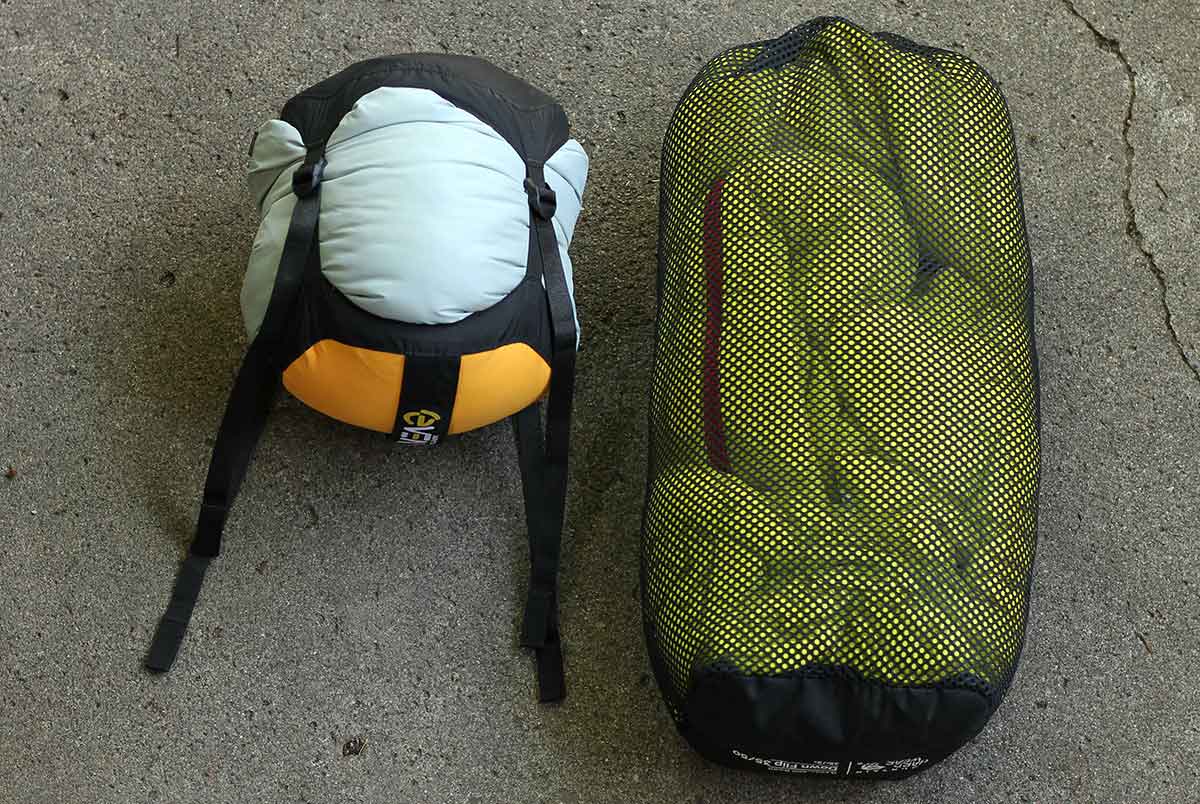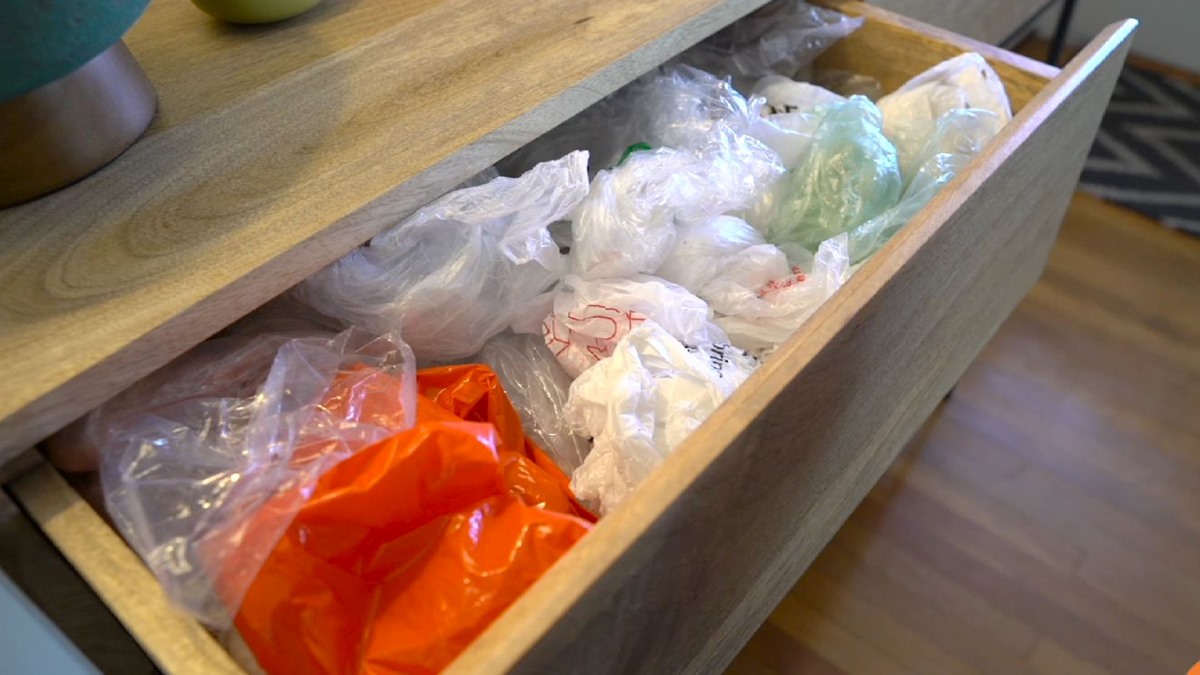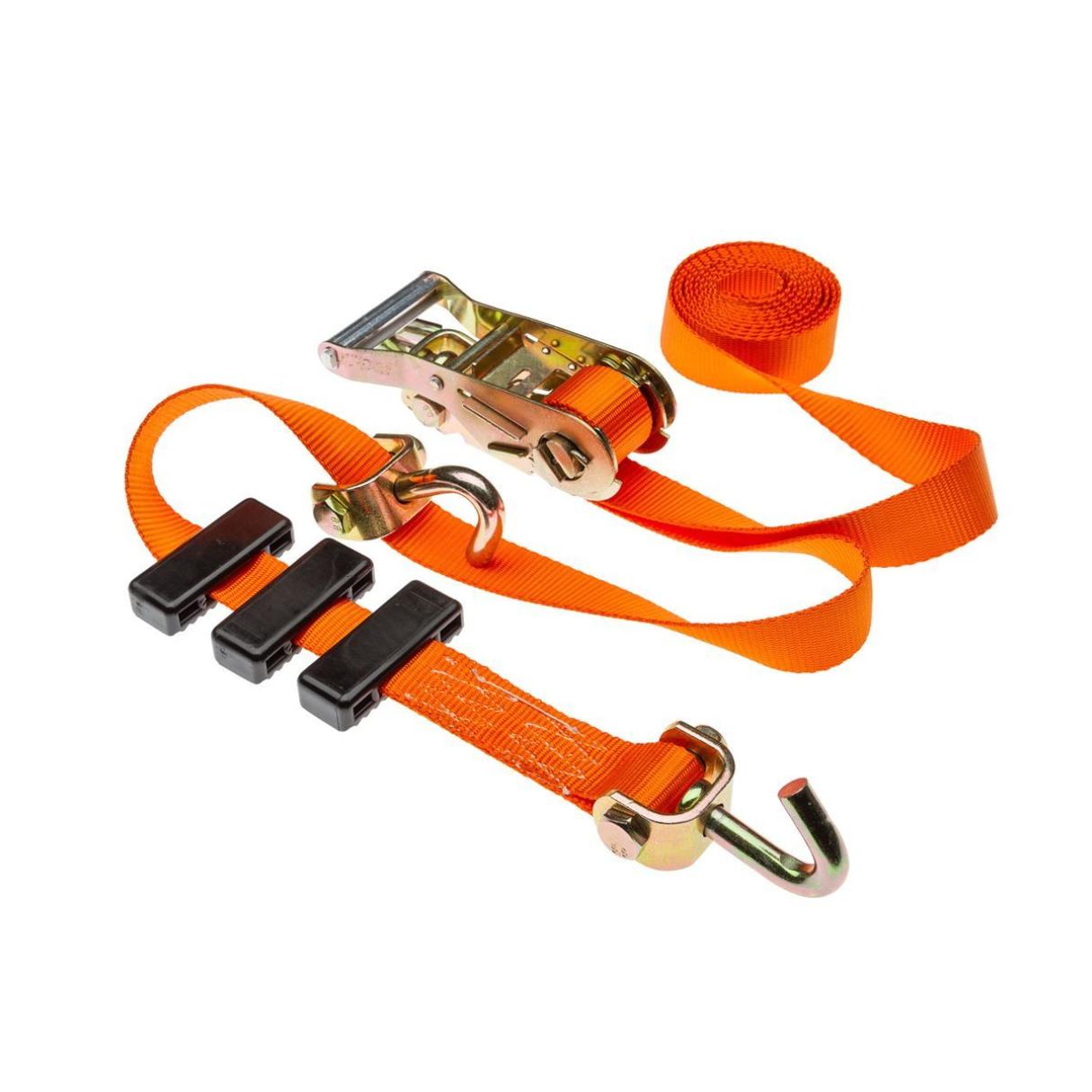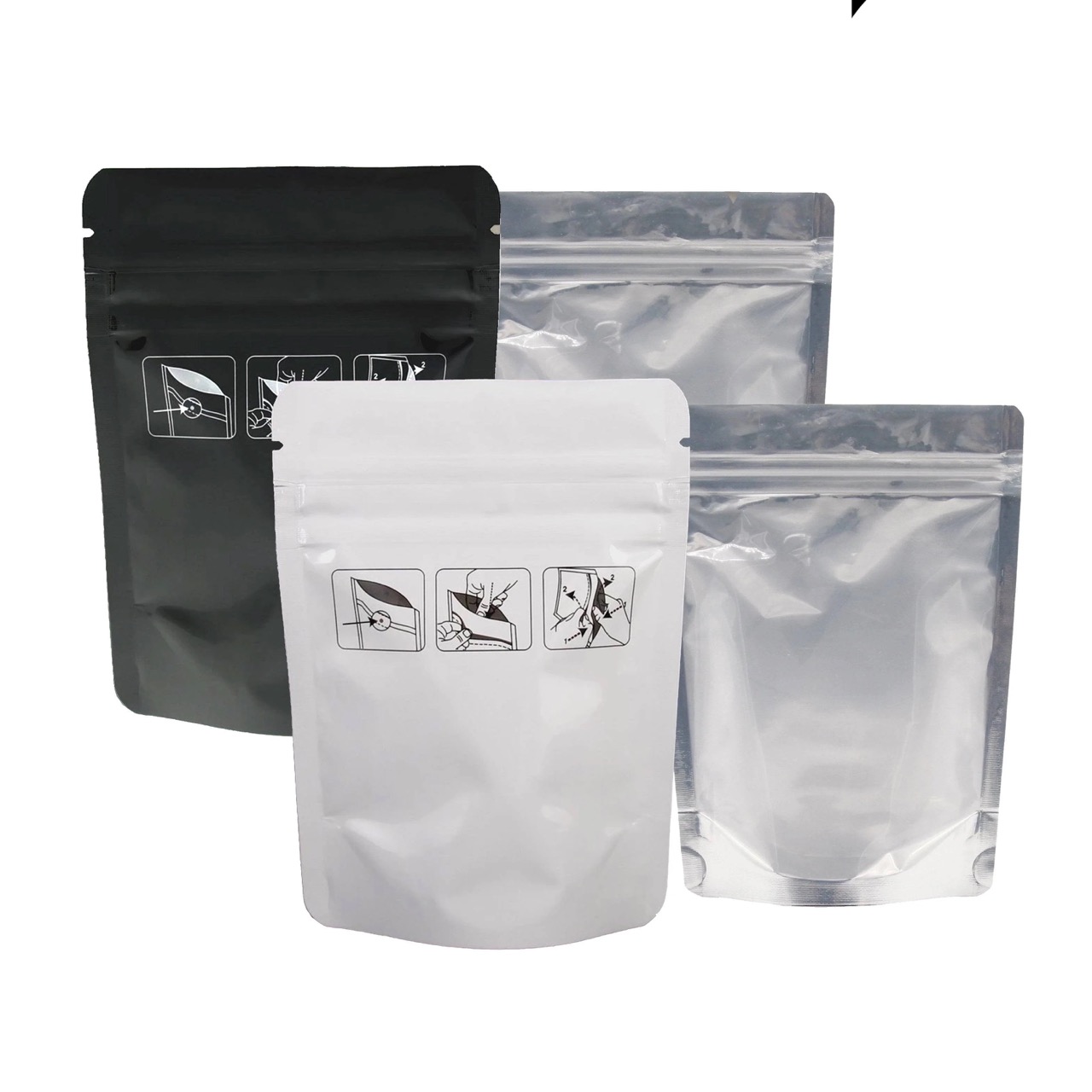

Articles
How To Store A Down Sleeping Bag
Modified: August 27, 2024
Learn how to properly store your down sleeping bag to prolong its lifespan and maintain its insulating properties. Check out our informative articles on the best practices for storing down sleeping bags.
(Many of the links in this article redirect to a specific reviewed product. Your purchase of these products through affiliate links helps to generate commission for Storables.com, at no extra cost. Learn more)
Introduction
Down sleeping bags are essential for outdoor enthusiasts who want to stay warm and comfortable during camping trips and backpacking adventures. These high-quality sleeping bags are known for their superior insulation and lightweight design, making them a popular choice among outdoor enthusiasts.
However, proper storage of a down sleeping bag is crucial to maintain its performance and extend its lifespan. Improper storage can lead to compressing the down insulation, which can reduce its loft and overall warmth. In addition, moisture can accumulate and cause mold or mildew growth, compromising the integrity of the bag.
In this article, we will provide you with a comprehensive guide on how to store a down sleeping bag properly. We will cover the steps involved in preparing your sleeping bag for storage, including cleaning, drying, folding, and packing. We will also discuss the best practices for storing your down sleeping bag to ensure it remains in excellent condition until your next outdoor adventure.
Before we dive into the storage process, let’s first understand what makes down sleeping bags so unique and effective. Understanding the properties of down insulation will help us take the necessary precautions to preserve its quality during storage. So, let’s get started by exploring the remarkable features of down sleeping bags.
Key Takeaways:
- Properly storing a down sleeping bag involves cleaning, drying, folding, and storing it in a breathable bag to maintain its loft and insulation. Regular maintenance and vigilance can prolong its lifespan and ensure optimal performance.
- Understanding the unique properties of down insulation is crucial for preserving the quality of a down sleeping bag. By following the recommended care and storage practices, outdoor enthusiasts can enjoy the warmth and comfort of their sleeping bag for years to come.
Read more: How To Store Sleeping Bags In Garage
Understanding Down Sleeping Bags
Down sleeping bags are highly regarded for their exceptional insulation properties. Unlike synthetic insulation, which is made of man-made fibers, down is a natural material that comes from the soft and fluffy undercoating of ducks or geese. This down insulation is known for its superior warmth, lightweight nature, and excellent compressibility.
The main factor that makes down insulation so effective is its ability to trap air. Each down cluster contains thousands of tiny filaments that create small air pockets. When compressed, these air pockets are squeezed together, reducing heat retention. However, when allowed to loft, the down fills up with air, creating a layer of insulation that efficiently traps heat and keeps you warm.
One of the key advantages of down sleeping bags is their remarkable warmth-to-weight ratio. Down insulation provides exceptional warmth while weighing significantly less than synthetic materials. This makes down sleeping bags highly desirable for backpackers and hikers who prioritize minimizing their pack weight.
Moreover, down sleeping bags offer excellent breathability. The natural fibers allow air to circulate, preventing overheating and moisture buildup. This breathability ensures a comfortable sleep, even in humid conditions.
However, down insulation requires specific care and maintenance to retain its loft and insulating properties. It is crucial to protect down from moisture, as it can compromise its loft and lead to the growth of mold or mildew. This is why proper storage is vital to preserve the quality of your down sleeping bag.
In the next sections, we will guide you through the step-by-step process of preparing your down sleeping bag for storage. From cleaning to drying, folding, and packing, we will provide you with all the necessary information to ensure your sleeping bag remains in top condition throughout its storage period. Let’s dive in and learn how to properly care for your down sleeping bag.
Preparing Your Down Sleeping Bag for Storage
Before you store your down sleeping bag, it is essential to prepare it properly to ensure its longevity and performance. Proper preparation will help prevent damage, maintain insulation loft, and keep your sleeping bag in optimal condition for your next adventure. Here are the steps to prepare your down sleeping bag for storage:
Cleaning Your Down Sleeping Bag
The first step in preparing your down sleeping bag for storage is to clean it. Over time, dirt, sweat, body oils, and other residues can accumulate on the fabric and down insulation. Cleaning your sleeping bag will not only remove these contaminants but also prevent them from breaking down the down fibers and compromising insulation.
Check the care instructions provided by the manufacturer for specific cleaning recommendations. In most cases, down sleeping bags can be safely machine-washed.
Start by using a down-specific cleaner or a gentle, non-detergent soap. Avoid using harsh detergents, bleach, or fabric softeners as these can damage the down insulation. Follow the instructions on the cleaner or soap for the proper amount to use.
Place your sleeping bag in a front-loading washing machine and set it to a gentle cycle with cold water. This will help protect the delicate down fibers. Avoid using a top-loading machine with an agitator, as it can cause excessive agitation and damage the sleeping bag.
Once the washing cycle is complete, rinse the sleeping bag thoroughly to remove any trace of soap. Repeat the rinsing process if necessary until the water runs clear.
Drying Your Down Sleeping Bag
Properly drying your down sleeping bag is crucial to prevent moisture buildup, mold, and mildew growth. Damp down insulation can lead to clumping and a loss of loft, significantly affecting the bag’s warmth and performance.
Air drying is the recommended method for drying down sleeping bags. However, it is essential to ensure thorough drying to prevent moisture retention. Hang your sleeping bag in a well-ventilated area or use a clothesline if available. Avoid direct sunlight, as it can break down the fabric and fade colors.
Regularly fluff and massage the sleeping bag to redistribute the down insulation and promote faster drying. This will help prevent clumping and ensure an even loft throughout the bag.
Depending on the weather conditions and the insulation’s thickness, drying your sleeping bag may take several days. Be patient and allow it to fully dry before proceeding to the next step.
Folding and Packing Your Down Sleeping Bag
Once your down sleeping bag is clean and completely dry, it’s time to fold and pack it in preparation for storage.
Start by laying your sleeping bag flat on a clean surface. Smooth out any wrinkles or creases and ensure that the insulation is evenly distributed.
Fold the sleeping bag in thirds lengthwise, starting from the bottom. Gently roll the folded bag from the bottom towards the top, squeezing out any excess air as you go. Take care not to compress the bag too tightly, as it can damage the down insulation.
Make sure the sleeping bag is in its stuff sack or a dedicated storage bag designed for down sleeping bags. Avoid using a compression sack for long-term storage, as it can compress the down insulation and compromise its loft.
Storing Your Down Sleeping Bag
Choose a cool, dry, and well-ventilated storage space for your down sleeping bag. Avoid storing it in a damp basement or attic, as the moisture can damage the insulation.
Ideally, store your down sleeping bag in a large, breathable cotton or mesh storage sack. This will allow air circulation and prevent the bag from compacting. Avoid using plastic bags, as they can trap moisture and promote mold growth.
Place your folded and packed sleeping bag in the storage sack, and ensure it is not compressed or crammed into a tight space. Store the bag in a horizontal position rather than hanging it, as hanging can place unnecessary strain on the seams and fabric.
Periodically check on your sleeping bag during storage to ensure there are no signs of moisture, pests, or damage. If necessary, air it out and fluff the insulation to prevent clumping.
By following these steps, you can properly prepare your down sleeping bag for storage. This will help maintain its loft, insulation, and overall performance, ensuring that it is ready for your next outdoor adventure.
Cleaning Your Down Sleeping Bag
Cleaning your down sleeping bag is an essential step in maintaining its performance and longevity. Regular cleaning helps remove dirt, oils, sweat, and other residues that can accumulate over time and compromise the down insulation’s loft and warmth. Here are the steps to properly clean your down sleeping bag:
Check the Manufacturer’s Instructions
Before proceeding with cleaning, carefully review the manufacturer’s instructions and recommendations specific to your down sleeping bag. Different brands and models may have specific guidelines, so it is important to follow them to avoid damaging the bag.
Spot Cleaning
For minor stains or spots, spot cleaning can be an effective method. Mix a small amount of down-specific cleaner or a gentle, non-detergent soap with water to create a mild cleaning solution. Test the solution on a small, inconspicuous area of the sleeping bag to ensure it does not cause any adverse reactions.
Using a soft cloth or sponge, gently dab the stained area with the cleaning solution. Avoid rubbing or scrubbing vigorously, as this can damage the fabric or cause the stain to spread. Rinse the area with clean water and blot it dry with a towel.
Machine Washing
If your down sleeping bag requires a more thorough cleaning, you can opt for machine washing. However, it is crucial to follow specific guidelines to avoid damaging the bag.
Pre-treat any heavily soiled areas or stains using a down-specific cleaner or a gentle, non-detergent soap. Gently rub the cleaning solution into the stained areas with a soft cloth or sponge.
Place your sleeping bag in a front-loading washing machine. Avoid using a top-loading machine with an agitator, as it can cause excessive agitation and damage the sleeping bag. Add a small amount of down-specific cleaner or a mild, non-detergent soap to the machine.
Set the machine to a gentle cycle with cold water. Use a minimal amount of detergent to prevent residue buildup. It is advisable to wash the sleeping bag alone or with other lightweight items to avoid excessive twisting and tangling.
Once the washing cycle is complete, rinse the sleeping bag thoroughly to remove any trace of soap. Repeat the rinsing process if necessary until the water runs clear.
Drying
Proper drying is crucial to prevent clumping, loss of loft, and the growth of mold or mildew. Air drying is the recommended method for drying down sleeping bags.
Drying Your Down Sleeping Bag
Properly drying your down sleeping bag is essential to maintain its loft and performance. Damp down insulation can lead to clumping, reduced insulation properties, and even mold or mildew growth. Here are the steps to effectively dry your down sleeping bag:
Read more: How To Store Sleeping Pad
Air Drying
Air drying is the preferred method for drying down sleeping bags, as it is gentle on the delicate down fill and helps preserve its loft. Follow these steps to air dry your sleeping bag:
1. Find a well-ventilated area: Choose a cool, dry, and well-ventilated location to hang your sleeping bag for drying. Avoid direct sunlight, as it can cause the fabric to fade and break down over time.
2. Hang your sleeping bag: Hang the sleeping bag by the loops or straps provided on the bag. Ensure that it is evenly distributed and not bunched up to facilitate proper airflow. You can use a clothesline, hanger, or a dedicated drying rack designed for sleeping bags.
3. Regularly fluff and massage the insulation: Every few hours, gently fluff and massage the sleeping bag to redistribute the down insulation. This helps to prevent clumping and ensures even loft throughout the bag. Carefully squeeze and separate any clumps you may come across.
4. Patience is key: Drying your down sleeping bag may take some time, depending on its size, thickness, and ambient conditions. It is essential to be patient and allow the bag to fully dry. Rushing the process by using direct heat sources can damage the fabric and ruin the down insulation.
Indoor Drying Options
If you are unable to air dry your down sleeping bag outdoors, or if weather conditions do not permit, there are a few indoor drying options you can consider:
1. Use a large room or spacious area: Find a room with ample space where you can spread out your sleeping bag. Lay it on a clean, breathable surface, such as a bed or a clean floor. Ensure good airflow by opening windows or using fans to circulate the air.
2. Utilize a fan or dehumidifier: Place a fan near the sleeping bag to create airflow and facilitate faster drying. Additionally, using a dehumidifier in the room can help remove excess moisture from the air, speeding up the drying process.
3. Dry in a large dryer or commercial dryer: If your sleeping bag is compatible with machine drying, you can use a large-capacity dryer or take it to a laundromat with commercial-sized dryers. Make sure to set the dryer on the lowest heat setting and add a few clean tennis balls or dryer balls to expedite the drying process and fluff the down insulation.
Remember, the drying process may take some time, and it is crucial to ensure that your sleeping bag is completely dry before storing it. Moisture trapped within the bag can lead to mold or mildew growth, which can damage the insulation and cause an unpleasant odor.
By following these steps, you can properly dry your down sleeping bag and ensure it retains its loft and insulation for your next outdoor adventure.
Folding and Packing Your Down Sleeping Bag
Folding and packing your down sleeping bag properly is essential for both storage and transportation. By following the correct techniques, you can prevent damage to the insulation and ensure that your sleeping bag retains its loft and performance. Here are the steps to effectively fold and pack your down sleeping bag:
Folding Method
1. Lay your sleeping bag flat: Start by laying your sleeping bag flat on a clean and dry surface. Smooth out any wrinkles or creases and ensure that the down insulation is evenly distributed.
2. Fold in thirds lengthwise: Fold the sleeping bag in thirds lengthwise, bringing the bottom end up towards the middle and then folding the top end down. This will create a long, narrow shape.
3. Squeeze out excess air: Gently press down on the folded sleeping bag to remove any excess air trapped inside. This will help reduce the overall bulkiness and make it easier to pack.
4. Roll from the bottom up: Starting from the bottom end, tightly roll the folded sleeping bag towards the top. Apply light pressure as you roll, squeezing out any remaining air. It is essential not to roll too tightly, as this can compress the down insulation.
5. Fasten with straps or cords: Once rolled, secure the sleeping bag by using the attached straps or cords. If your sleeping bag does not have built-in straps, you can use compression straps or cords to secure it.
Read more: How To Store A Down Comforter
Packing Options
1. Stuff sack: Many down sleeping bags come with a stuff sack specifically designed for packing and compressing the bag. Place your rolled sleeping bag into the stuff sack and tighten the drawstring or compression straps to compress it further. However, avoid compressing the bag too tightly for long-term storage, as it can affect the loft and quality of the down insulation.
2. Dedicated storage bag: If your down sleeping bag did not come with a stuff sack or you prefer not to compress it, you can use a dedicated storage bag. These bags are typically larger and made of breathable materials to allow air circulation, preventing the bag from compacting. Place your sleeping bag gently into the storage bag, ensuring that it is not crammed or compressed. Close the bag securely.
3. Backpack or duffel bag: If you are transporting your sleeping bag for outdoor adventures, you can consider packing it directly into your backpack or duffel bag. Place the rolled sleeping bag inside a durable and waterproof stuff sack or a large plastic bag to protect it from moisture. Then, carefully position it inside your backpack or duffel bag, making sure it is not excessively compressed by other gear or items.
It is important to note that down sleeping bags should not be stored in the compressed state for extended periods. If using a compressed stuff sack, it is recommended to remove the bag from the compression and allow it to loft before extended storage. This will help maintain the integrity and insulation properties of the down.
By following these steps, you can effectively fold and pack your down sleeping bag, ensuring its protection and maintaining its loft and performance. Proper packing will make it easier to store and transport your sleeping bag, so it’s ready for your next camping or backpacking adventure.
Storing Your Down Sleeping Bag
Proper storage of your down sleeping bag is crucial to maintain its loft, insulation, and overall performance. By following the correct storage practices, you can ensure that your sleeping bag remains in top condition and ready for your next outdoor adventure. Here are the steps to effectively store your down sleeping bag:
Choose a Suitable Storage Space
Select a cool, dry, and well-ventilated storage space for your down sleeping bag. Ideally, the area should be free from moisture, extreme temperatures, and direct sunlight. Avoid storing the bag in a damp basement, attic, or garage, as these environments can lead to moisture buildup and damage the down insulation.
Use a Breathable Storage Bag
Invest in a large storage sack made of breathable materials, such as cotton or mesh. These bags allow air circulation and prevent the sleeping bag from being compressed. Avoid using plastic bags or airtight containers for long-term storage, as they can trap moisture and promote the growth of mold or mildew.
Place your folded and packed sleeping bag into the storage bag, ensuring that it is not overly compressed. The goal is to maintain the natural loft of the down insulation. Gently arrange the sleeping bag inside the storage bag, avoiding any sharp or protruding objects that could potentially cause damage.
Read more: How To Store Bags
Do Not Hang Your Sleeping Bag
While hanging your sleeping bag may seem like a convenient storage solution, it is not the best method for down sleeping bags. Hanging can place unnecessary strain on the fabric, seams, and insulation. Instead, store your sleeping bag in a horizontal position, allowing it to rest naturally.
Periodic Airings and Inspections
It is important to periodically air out and inspect your sleeping bag during storage to prevent moisture buildup and detect any potential issues. Every few weeks, open the storage bag and unfold your sleeping bag to allow it to breathe.
Check for any signs of moisture, pests, or damage. If you notice any dampness, air it out in a well-ventilated area until completely dry. Inspect the bag for any signs of wear and tear, loose threads, or damaged zippers. Taking care of any issues promptly will help prevent further damage and ensure that your sleeping bag stays in optimal condition.
Protect from Pests
To protect your sleeping bag from pests such as insects or rodents, consider placing mothballs or cedar chips inside the storage bag. These natural deterrents can help prevent unwanted visitors from making a home in your sleeping bag.
Store with Care
Once you have prepared your sleeping bag for storage, place the storage bag in your chosen storage space. Ensure that the bag is not subjected to excessive weight or pressure that could compress the down insulation.
Avoid stacking heavy items on top of the storage bag, as this can damage the sleeping bag and affect its loft. Store the bag away from direct sunlight, extreme temperatures, and sources of moisture.
Read more: How To Store Down Jacket
Regularly Inspect and Air Out
While in storage, periodically inspect and air out your sleeping bag. This will help maintain its freshness and prevent any long-term damage. If possible, consider rotating the bag or moving it to different storage locations to prevent extended periods of pressure on specific areas.
By following these steps and adopting proper storage practices, you can ensure that your down sleeping bag remains in excellent condition for years to come. When it’s time for your next outdoor adventure, your sleeping bag will be ready to provide the comfort and insulation you need for a blissful night’s sleep.
Potential Issues to Look Out For
While down sleeping bags are durable and built to withstand outdoor conditions, it’s important to be aware of potential issues that can arise over time. Being proactive and addressing these issues promptly can help maintain the performance and longevity of your sleeping bag. Here are some potential issues to look out for:
Moisture Accumulation
Moisture is one of the biggest enemies of down insulation. Excessive moisture can lead to clumping, loss of loft, and the growth of mold or mildew. It’s important to store your down sleeping bag in a dry environment and take precautions to prevent moisture accumulation.
Always ensure that your sleeping bag is completely dry before storing it. If you notice any signs of dampness during storage, air it out in a well-ventilated area until fully dry. Regularly inspect your storage space for any signs of moisture or leaks, and address the issue promptly to prevent damage to your sleeping bag.
Compression Damage
Compressing your down sleeping bag for extended periods can lead to damage to the down insulation. While it may be necessary to compress your sleeping bag for transportation, avoid storing it in a compressed state for long periods.
Using a large storage sack or dedicated storage bag that allows proper air circulation is crucial to avoid excessive compression. Avoid using compression sacks designed for short-term use, as they can compress the down insulation and affect its loft and performance.
Read also: 14 Best Sleeping Bag Storage Sack For 2025
Fabric Wear and Tear
The outer fabric of your sleeping bag may endure wear and tear over time. Inspect the fabric regularly for any signs of fraying, tears, or punctures. Pay close attention to areas of high stress, such as the footbox and hood. Unaddressed damage to the fabric can compromise the overall performance and insulation of your sleeping bag.
If you notice any small tears or punctures, they can typically be repaired using a patch kit specifically designed for outdoor gear. Larger or more severe damage may require professional repair. Act promptly to prevent further damage and to ensure the longevity of your sleeping bag.
Loft Loss
Loft loss refers to the reduction in the fluffiness and thickness of the down insulation. Over time, the down clusters can break down or compress, leading to a loss of loft and insulation capacity. This can occur naturally with regular use and age.
To help maintain loft and prevent clumping, regularly fluff and shake your sleeping bag, even during storage. This will help redistribute the down insulation and promote better loft. Avoid overly compressing the sleeping bag during storage, and follow proper packing and storage techniques to preserve its loft.
Damaged Zippers and Hardware
The zippers and other hardware on your sleeping bag can also experience wear and tear. Regularly check the zippers for any signs of damage, such as bent teeth or difficulty in opening or closing. Lubricate the zipper periodically with a suitable lubricant to ensure smooth operation.
Inspect other hardware, such as cord locks or toggles, for any signs of damage or malfunction. Replace or repair any damaged hardware to ensure that your sleeping bag functions properly.
By being vigilant and addressing these potential issues, you can prolong the lifespan of your down sleeping bag. Regular maintenance and proper care will help ensure that your sleeping bag continues to provide optimal warmth and comfort during your outdoor adventures.
Conclusion
A down sleeping bag is a valuable investment for outdoor enthusiasts, providing warmth, comfort, and excellent insulation. Properly caring for your down sleeping bag is crucial to ensure its longevity, performance, and comfort. By following the steps outlined in this guide, you can effectively prepare, clean, dry, fold, pack, and store your down sleeping bag.
Understanding the unique properties of down insulation helps you take the necessary precautions to maintain its loft and insulating capabilities. Cleaning your sleeping bag regularly removes dirt, oils, and residues that can compromise the down insulation’s effectiveness.
Drying your down sleeping bag thoroughly is essential to prevent clumping and the growth of mold or mildew. Air drying is recommended, but indoor drying options can be used if necessary.
Folding and packing your down sleeping bag correctly helps maintain its loft and insulation. Avoid compression for extended periods to prevent damage to the down insulation.
Selecting a suitable storage space and using a breathable storage bag are vital to prevent moisture accumulation and damage. Regularly inspecting and airing out your sleeping bag during storage helps maintain its freshness and detect any potential issues.
Finally, by being aware of potential issues such as moisture accumulation, compression damage, fabric wear and tear, loft loss, and damaged zippers or hardware, you can promptly address any problems and ensure the longevity of your down sleeping bag.
Remember, proper care and maintenance of your down sleeping bag will help it perform optimally while keeping you warm and comfortable on your outdoor adventures for years to come. With the knowledge and practices outlined in this guide, you can confidently store your down sleeping bag and be ready for your next exciting outdoor escapade.
Frequently Asked Questions about How To Store A Down Sleeping Bag
Was this page helpful?
At Storables.com, we guarantee accurate and reliable information. Our content, validated by Expert Board Contributors, is crafted following stringent Editorial Policies. We're committed to providing you with well-researched, expert-backed insights for all your informational needs.









0 thoughts on “How To Store A Down Sleeping Bag”